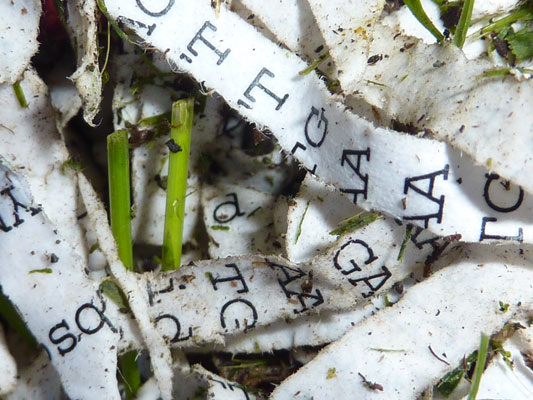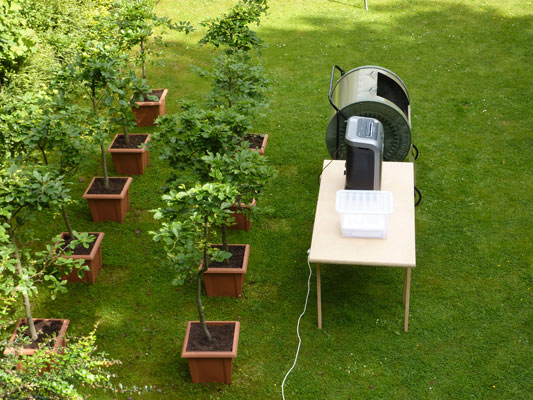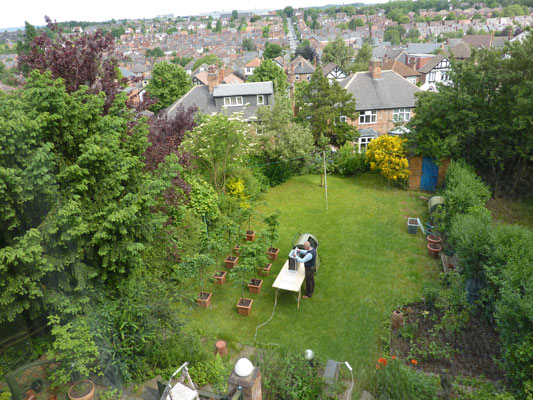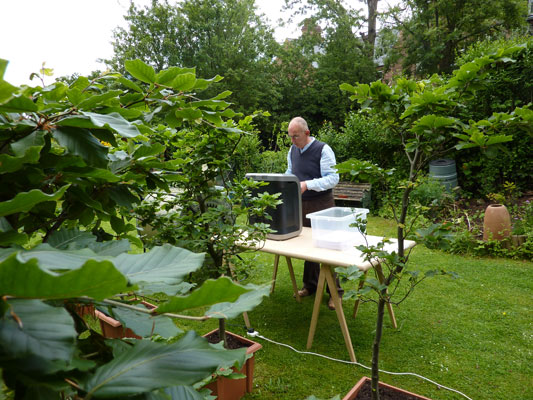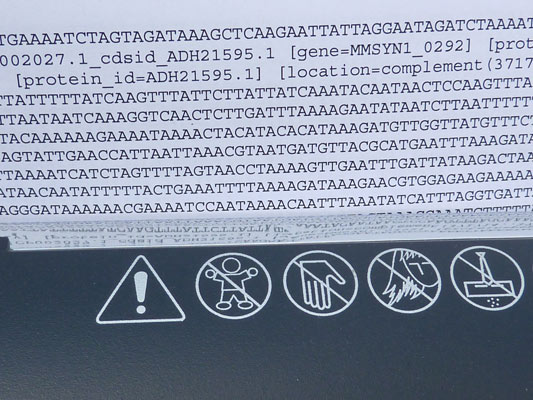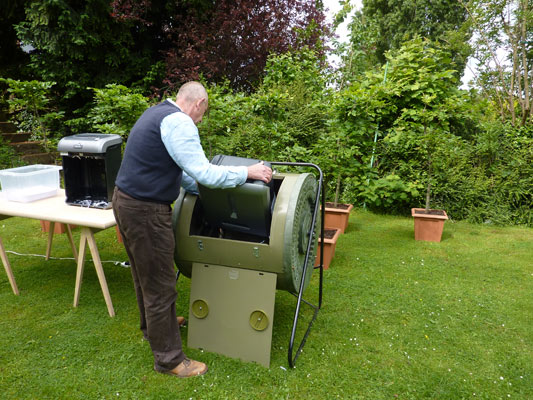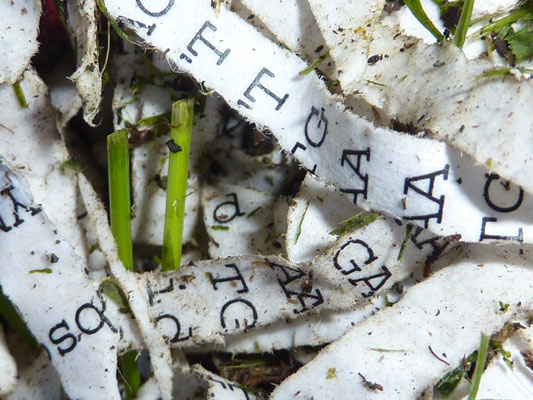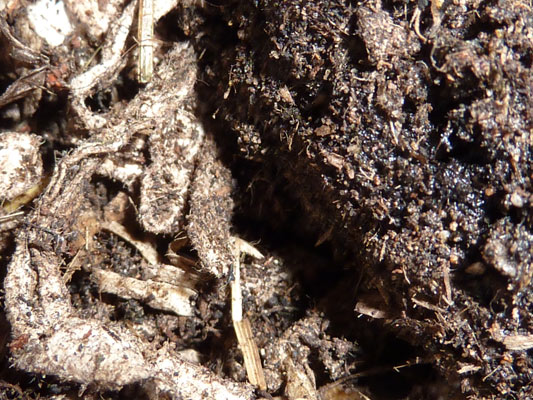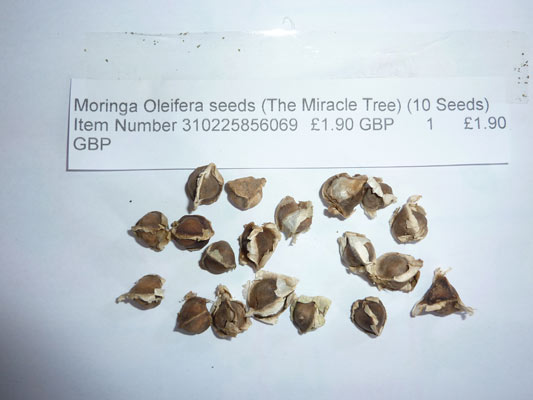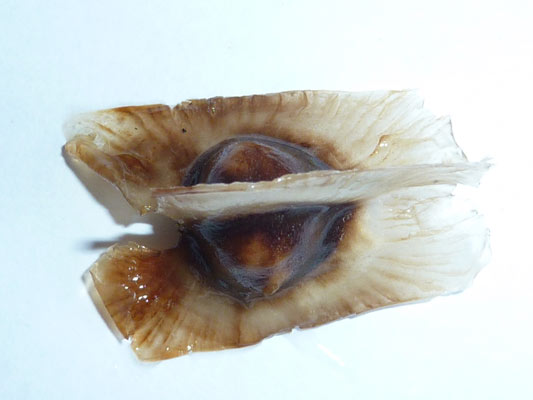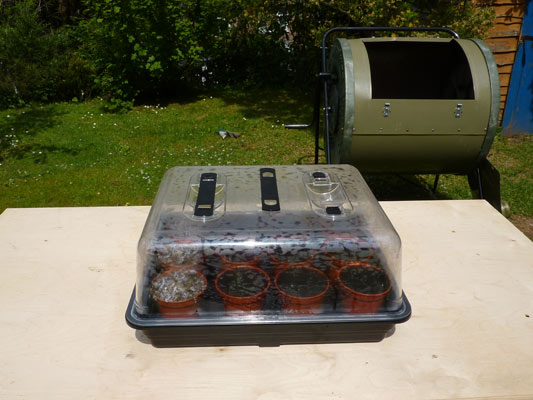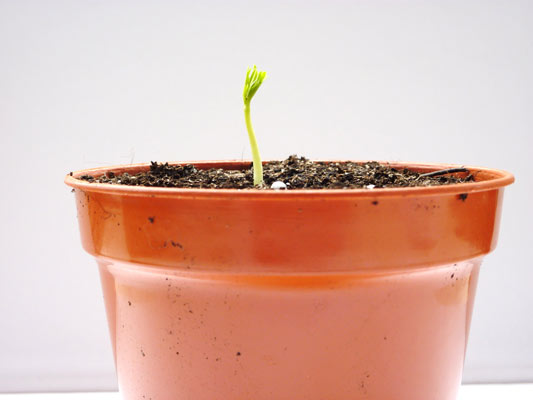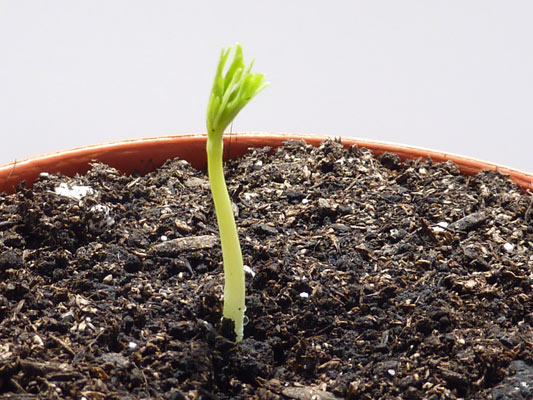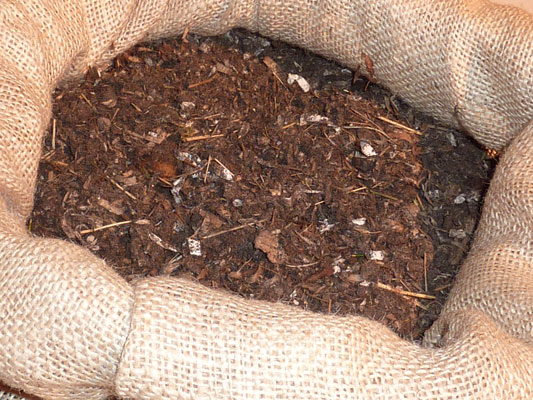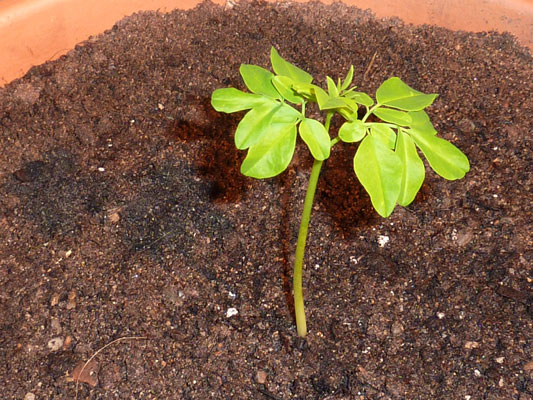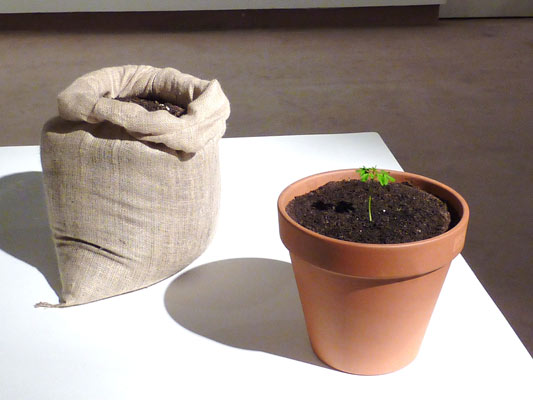This work was developed in collaboration with Bronislaw Szerszynski of the Department of Sociology and the ESRC Centre for the Economic and Social Aspects of Genomics (CESAGen), Lancaster University.
Synthia II (code / soil / life) consists of a soil constructed by shredding Craig Venter’s synthetic life form ‘Synthia’ and blending it with vegetable matter grown in the ‘root zone’ land outside of our house. The soil was constructed over an 18 day period that deployed a closeness of observation and experimentation in order to convert 634 pages of code and text into a material that could sustain life. The constructed soil, hopefully, will enable the growth of a Moringa Oleifera (miracle tree). These trees are amongst the most versatile trees in the world.
The work records an experimentation that is a relationship of meaning and materiality constructing, cultivating and reviewing a poetics of responsibility. It is a relationship that advocates an intelligent ecology based on values that are immanent in the complex workings of nature.
Venter’s Synthia seems at odds to a social ecology, in a state of co-creation with the natural environment. The attempt to grow a Moringa Oleifera tree in a soil largely constructed from Venter’s code is a renewing of the vital need for a co-creation between the natural environment and us. Synthia II is a permanent work commissioned by Lancaster University.
The soil is constructed from the following documents relating to Craig Venter's creation of a synthetic life form, Synthia (Mycoplasma mycoides JCVI-syn1.0): 1. The article in Science where Venter published the news that he'd created a synthetic life form in May - 12 pages 2. The supporting online material for that - 29 pages 3. The print out of the entire Synthia genome - 279 pages 4. The supporting files explaining what all the genes are - 314 pages Total text = 634 pages + vegetable matter as approximately 20% of the soil composition [gallery]
